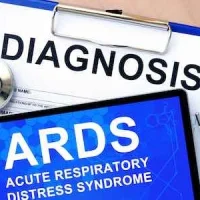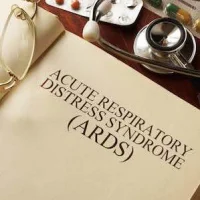A new analysis shows that biomarkers of intravascular monocyte activation in at-risk patients were associated with the development of acute respiratory distress syndrome (ARDS). Further, the potential clinical benefit of early aspirin for prevention of ARDS remains uncertain, according to the findings reported in the American Journal of Respiratory and Critical Care Medicine.
These findings "have demonstrated that specific plasma lipid mediators and peripheral blood leukocyte responses are present in patients at-risk for ARDS and indicative of clinical outcomes and aspirin’s biochemical actions," study authors write. "These results have uncovered an association between peripheral blood monocytes and monocyte-platelet interactions and the development of ARDS, supporting a pivotal role for intravascular events in early ARDS pathogenesis."
ARDS remains a life-threatening illness characterised by dysregulated inflammation and alveolar-capillary barrier disruption. Effective medical therapies for established ARDS are lacking, emphasising the need for early identification of at-risk patients to facilitate the development of preventive strategies.
Raja-Elie E. Abdulnour, MD, Department of Medicine, Division of Pulmonary and Critical Care Medicine, Brigham and Women’s Hospital, Harvard Medical School, Boston, and colleagues conducted this study to test the hypothesis that circulating bioactive lipid mediators and intravascular leukocyte and platelet activation are associated with the development of ARDS. Patients at risk for ARDS were randomised as part of a multicentre, double-blind clinical trial of aspirin versus placebo (the LIPS-A [Lung Injury Prevention Study with Aspirin] trial; NCT01504867). Plasma thromboxane B2 (TXB2), aspirin-triggered lipoxin A4 (15-epi-LXA4, ATL), and peripheral blood leukocyte number and activation were determined on enrolment and after treatment with either aspirin or placebo.
According to the researchers, 33 of 367 patients (9 percent) developed ARDS after randomisation. Baseline ATL levels, total monocyte counts, intermediate monocyte counts, and monocyte–platelet aggregates were associated with the development of ARDS. Peripheral blood neutrophil count and monocyte–platelet aggregates significantly decreased over time.
In addition, nine patients developed ARDS after randomisation but before study drug initiation, including seven subjects assigned to aspirin treatment. Study patients without ARDS at the time of first dose demonstrated a lower incidence of ARDS with aspirin treatment. Compared with placebo, aspirin significantly decreased TXB2 and increased the ATL/TXB2 ratio.
"As seen herein, TxB2 plasma levels were decreased by aspirin. In contrast, plasma ATL levels here were already higher than ATL plasma levels reported in healthy subjects and not further increased with aspirin, indicating that aspirin-acetylation of COX-2 [cyclooxygenase-2] alone was not sufficient to drive further increases in plasma ATL production," the authors explain.
In this study, plasma ATL/TxB2 ratio showed a strong negative correlation with plasma TxB2 levels that was principally driven by the changes in TxB2, "emphasising that distinct biosynthetic pathways may be selectively regulated in platelets from subjects at risk for ARDS," according to the authors. In addition, neutrophil activation correlated with monocyte activation, indicating concurrent roles for both cell types upon patient presentation for host responses.
The authors say a key limitation of this study is that no external cohort was available to validate their findings.
Image credit: pxhere.com
References:
Abdulnour RE, Gunderson T, Levy BD et al. (2018) Early Intravascular Events Are Associated withDevelopment of Acute Respiratory Distress Syndrome. A Substudy of the LIPS-AClinical Trial. Am J Respir Crit Care Med. Jun 15;197(12):1575-1585. doi: 10.1164/rccm.201712-2530OC
Latest Articles
ARDS, acute respiratory distress syndrome, intravascular events
Early intravascular events may contribute to ARDS development










